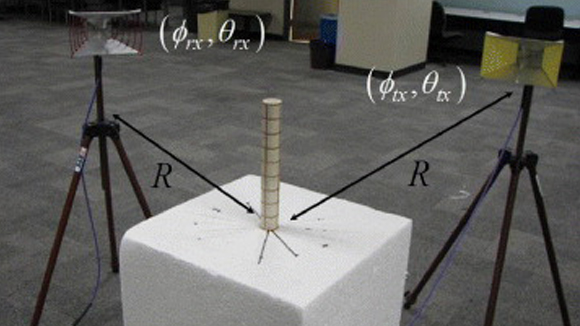Latest invisibility cloak tech can hide a single skin cell
But could lead to a real invisibility cloak

Researchers at the University of Texas in Austin have invented new a invisibility cloak technology that could eventually lead to practical applications.
A "real" invisibility cloak - insofar as the concept is understood in popular culture - would ostensibly allow a wearer to sneak around Hogwarts and other, more mundane locales without being spotted.
Of course, Harry Potter's invisibility cloak won't be much use when the zombie apocalypse arrives, since as everybody knows, zombies hunt mainly by smell.
Is that enough obligatory pop culture references? Good. Back to the news at hand, then.
Hide your kids, hide your skin cells
The ideal invisibility cloak is not just an invisible garment, but rather one that also hides whatever is underneath it.
Unfortunately, this latest invisibility cloak technology, described in IOP Science's New Journal of Physics, doesn't live up to our unjustifiably high standards - not yet, at least.
It is reportedly the thinnest invisibility cloak technology developed to date, measuring in at just 15mm thick, and it uses practical materials such as copper and polycarbonate.
Get daily insight, inspiration and deals in your inbox
Sign up for breaking news, reviews, opinion, top tech deals, and more.
The copper is patterned such that scattered light from the cloak and the object underneath it is "cancelled out," according to Slashgear.
Unfortunately, that makes it better at hiding objects from microwaves - like what's used by radar - than visible light. In its current state it can make objects about the size of one or two skin cells invisible to light, but nothing larger than that.
Promises
The project's co-author, Andrea Alu, did reportedly say that "this concept could put us closer to a practical realization," though.
Of course, she would say that - we'll be more inclined to believe it when we can slip it over our shoulders and sneak out of work early without anyone noticing. Forgive us for being skeptical, but we've heard this one before.
We first learned about it in 2008, when researchers at UC Berkeley developed a material that could bend light waves.
Then, again in 2008 when researchers at the University of Grenada in Spain created "a simulated layer system" that could hide some objects from electromagnetic waves.
Soon after in 2009, a professor at Purdue University in Indiana invented a "tapered optical waveguide" that could reportedly hide a human hair from visible light.
And once more in 2009, nano magnet technology research from the Netherlands supposedly brought invisibility cloaks nano-inches close to reality.
Following that discovery in 2010, a team at Fudan University in Shanghai claimed that silver-plated nanoparticles suspended in water would do the trick.
And finally, in 2011, a lump of crystal questionably referred to as an invisibility cloak was reportedly used by a computer scientist at University College London to hide pins and paper clips.
Seriously, one of these things has to really work eventually, right?
Michael Rougeau is a former freelance news writer for TechRadar. Studying at Goldsmiths, University of London, and Northeastern University, Michael has bylines at Kotaku, 1UP, G4, Complex Magazine, Digital Trends, GamesRadar, GameSpot, IFC, Animal New York, @Gamer, Inside the Magic, Comic Book Resources, Zap2It, TabTimes, GameZone, Cheat Code Central, Gameshark, Gameranx, The Industry, Debonair Mag, Kombo, and others.
Micheal also spent time as the Games Editor for Playboy.com, and was the managing editor at GameSpot before becoming an Animal Care Manager for Wags and Walks.
